I arrived at my sit spot at Oyster Pond on Monday, November 4th at 9:32 and left at 10:35am. This is during the day, since I slept in through the timeline for dusk (oops!). I’ve only gone during the day, but I usually go around 2 in the afternoon, so 10am is much earlier that I have done in the past. I chose to do an earlier time so I could go at dusk for my 5th sit spot observation, and because I wanted to see if there was more wildlife in the morning when they wake up and face the trials and tribulations of the new day. Unless they’re nocturnal, of course. Additionally, I wanted to see if there were different insects at the morning versus the afternoon and see if I could find the fish I wasn’t able to see in the past observation. I went as early as I could so I could go later/in the evening for my next observation and have a more accurate comparison of the wildlife at differing times of day.
It. Was. COLD!!! I almost lost a finger due to frostbite I swear. Okay, I’m being a little dramatic, but it was sunny outside and about 44 degrees outside. Where I’m from it only gets that cold in the middle of the night during the winter and it warms up once the sun shines it rays. Not here apparently. The cold, brisk breeze from the Northwest I loved so much at my first sit spot became the bane of my existence. I didn’t like being cold, so my experience wasn’t that amazing, but I did get to see leaves falling (yes, it is still a phenomenon to me), so I had fun. In future I will definitely wear more layers so I can come out in the morning again. The breeze made me feel so much colder and less comfortable, but that was a constant force acting at all my observations. The sky was clear, unlike my last sit spot, but it was so much colder than last time. There were a few clouds scattered about the bright blue sky, with some white lines streaked across the sky from passing planes. Since I got here earlier in the morning, there wasn’t any harsh sunlight, so I didn’t need my sunglasses (which was nice).
There were so many changes from my last sit spot. For example, I could barely find my pinecones because there were so many dead pine needles on the forest floor. It looked like there were more needles than grass. I got to see the tan fish with the black tailfin and black dot between its eye and gill again; solely due to the fact that the moss was more clumped together in the middle of the pond than in previous days. I saw a school of about 4 of them and the largest one only looked to be about 3 inches long. They were feeding on the moss and algae on the rocks in the sun, but swam away once I approached the water’s edge to get a closer look at them. There was an abundance of leaves in the pond when compared to my other observation days, which makes sense (a majority of the trees around the pond lost at least half of their leaves). The willow tree to the North didn’t lose as many leaves as I initially thought, for it only had a few bate branches. I saw an adorable and tiny little bright green insect. It looked like a 3-millimeter-tall and 1.5-millimeter-wide leaf. It was so skinny/flat I’m surprised it wasn’t carried away by the wind. I identified it as a leaf insect (so scientific, I’m aware). I only saw 6 transparent, green legs on it and 2 antennae. It was jumping around my feet, but I couldn’t get my camera to focus on it (it was so tiny). I was wondering if it was a baby/infant or not due to its size, but it I fall, so not many births should be happening in the insect population at this time I don’t think. It was much too small and leaf-like to be a cricket or grasshopper. I think it was trying to find food or a warmer place to sunbathe.
My 3 things have changed so much since my last sit spot. Regarding my pinecones, I could only find 1 of them easily. The second one was either crushed or began to rot, for I couldn’t really see it under the new blanket of the pine needles. The second pinecone, however, seems more fragile than before and the moss on it has not been spreading at all. I think that humans or deer may have squished the other pinecone. I finally got to see my rock again! There was lots of bright green algae growing from it in clumps about 5 inches in length, which was not there last time I saw it. Previously, the only moss on it was pea soup green and seemed fuzzier. The large tree across the pond exhibited the greatest change, in my opinion. It seemed to have lost about 75% of its leaves and the rest of the intact leaves were yellow and brown. It still looked so beautiful and powerful, but with less embellishment its large leaves gave it. There was a small blanket of its leaved directly underneath the canopy, but many of the leaves were on the outskirts of Oyster Pond, an allochthonous food source. I keep needing to remind myself that the trees aren’t dying-they do this every year (in California our trees don’t really lose their leaves). I think the drastic temperature changes that occurred between this and the last sit spot definitely impacted and changed the ecosystem at Oyster Pond.
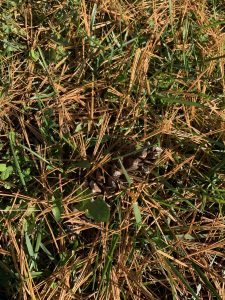
The pinecones I’ve been studying-they look to be decomposing or rotting.

The willow tree to the North that has lost some of its leaves, but it still looks like it is surviving the cold.
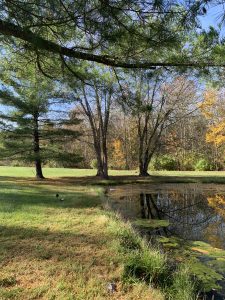
Bare trees to the Southwest.
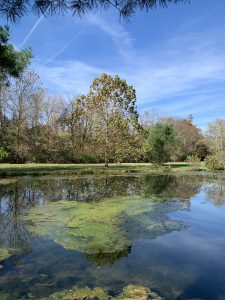
The tree I’ve been observing that has lost 3/4 of it’s original leaves.
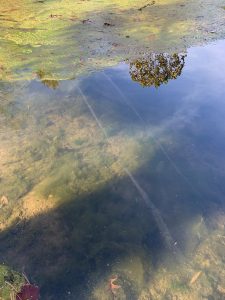
A slightly obscured view of the rock and moss I’ve been observing.

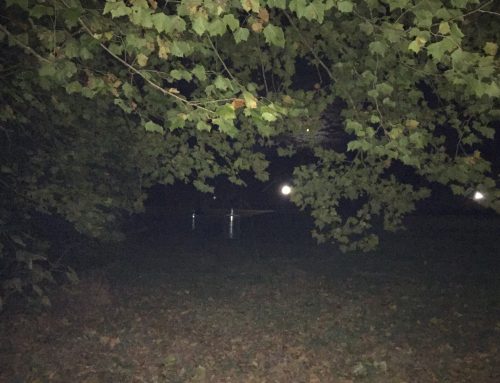
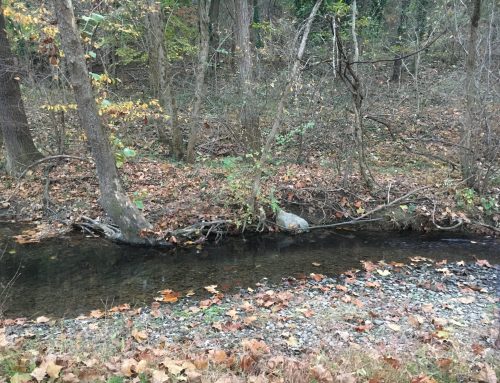
Have you been able to identify the fish in the pond?
The oyster pond is right across my sit spot and i have been noticing changes there every time I go there. It is such a beautiful place and I love the pictures that you have taken. I agree that going in the morning is very difficult due to the cold. I went to my sit spot at around noon and i felt super cold as well due to the cold breeze.
I love your photos! And I bet that the water was chilly, I wouldn’t want to stick my finger in there!